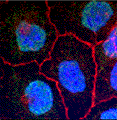Biochemistry, Department of
Document Type
Article
Date of this Version
11-2011
Citation
Uluisik I, Kaya A, Fomenko DE, Karakaya HC, Carlson BA, et al. (2011) Boron Stress Activates the General Amino Acid Control Mechanism and Inhibits Protein Synthesis. PLoS ONE 6(11): e27772. doi:10.1371/journal.pone.0027772
Abstract
Boron is an essential micronutrient for plants, and it is beneficial for animals. However, at high concentrations boron is toxic to cells although the mechanism of this toxicity is not known. Atr1 has recently been identified as a boron efflux pump whose expression is upregulated in response to boron treatment. Here, we found that the expression of ATR1 is associated with expression of genes involved in amino acid biosynthesis. These mechanisms are strictly controlled by the transcription factor Gcn4 in response to boron treatment. Further analyses have shown that boron impaired protein synthesis by promoting phosphorylation of eIF2α in a Gcn2 kinase dependent manner. The uncharged tRNA binding domain (HisRS) of Gcn2 is necessary for the phosphorylation of eIF2α in the presence of boron. We postulate that boron exerts its toxic effect through activation of the general amino acid control system and inhibition of protein synthesis. Since the general amino acid control pathway is conserved among eukaryotes, this mechanism of boron toxicity may be of general importance.
Included in
Biochemistry Commons, Biotechnology Commons, Other Biochemistry, Biophysics, and Structural Biology Commons


Comments
Copyright 2011 Uluisik et al. This is an open-access article distributed under the terms of the Creative Commons Attribution License, which permits unrestricted use, distribution, and reproduction in any medium, provided the original author and source are credited.